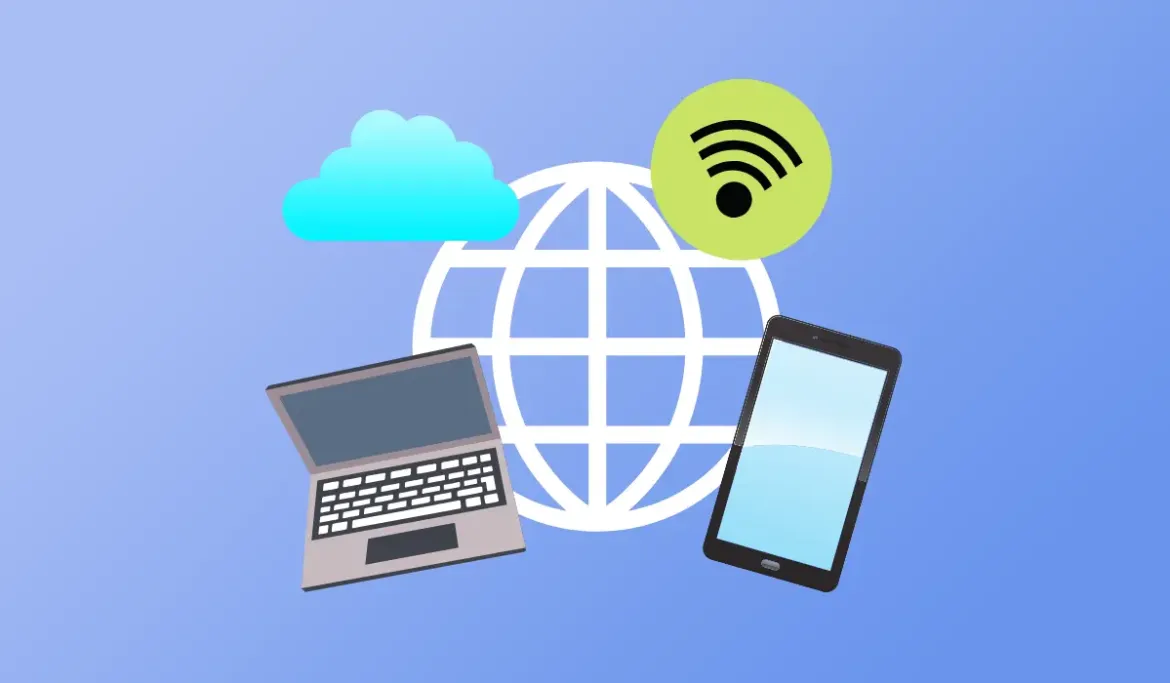Internet is the network of networks, The internet is a global network of interconnected computers and servers that enables the exchange of information and communication across vast distances. It has revolutionized how we access information, communicate, conduct business, and entertain ourselves. Here's a comprehensive overview of the internet:
History and Development
Early Beginnings
1960s: The concept of a global network began with the development of ARPANET by the U.S. Department of Defense. ARPANET was the first operational packet-switching network and laid the groundwork for the modern internet.
1970s-1980s: The development of TCP/IP protocols standardized data transmission across networks, allowing different computer networks to interconnect. This period saw the establishment of key technologies and concepts such as email, file transfer, and remote login.
Expansion and Commercialization
1990s: The invention of the World Wide Web by Tim Berners-Lee transformed the internet from a research-oriented network to a widely accessible platform. The introduction of web browsers like Mosaic and Netscape Navigator made it easier for people to access and navigate the web.
Late 1990s-2000s: The internet experienced rapid growth and commercialization. E-commerce, online banking, and social media began to emerge, significantly changing the way people interacted with the internet.
Structure and Functionality
Basic Components
Infrastructure: The internet relies on physical infrastructure, including fiber-optic cables, satellites, and wireless networks, to transmit data across the globe.
Protocols: TCP/IP (Transmission Control Protocol/Internet Protocol) is the foundational protocol suite that governs data exchange on the internet.
Servers and Clients: Servers host data and services, while clients (computers, smartphones, etc.) access these services.
Key Technologies
World Wide Web (WWW): A system of interlinked hypertext documents accessed via web browsers. It is the most popular service on the internet.
Email: One of the earliest and most widely used applications of the internet, allowing users to send and receive messages electronically.
Search Engines: Tools like Google, Bing, and Yahoo! enable users to find information on the web quickly.
Social Media: Platforms like Facebook, Twitter, Instagram, and LinkedIn facilitate social interaction and content sharing.
Streaming Services: Websites like YouTube, Netflix, and Spotify provide on-demand video and audio content.
Impact on Society
Communication
The internet has revolutionized communication, making it instant and accessible from virtually anywhere. Email, instant messaging, and video conferencing have made it easier to stay connected personally and professionally.
Information Access
The internet has democratized access to information, providing vast resources for education, research, and entertainment. Online encyclopedias, digital libraries, and educational platforms like Coursera and Khan Academy have made learning more accessible.
Commerce
E-commerce has transformed the retail industry. Online marketplaces like Amazon, eBay, and Alibaba have changed how people shop, offering convenience and a wide range of products.
Social Interaction
Social media platforms have changed how people interact, share experiences, and form communities. They have also become important tools for marketing, activism, and information dissemination.
Economy
The internet has created new industries and job opportunities. Digital marketing, software development, cybersecurity, and data analytics are just a few examples of internet-driven career fields.
Challenges and Concerns
Security and Privacy
Cybersecurity threats such as hacking, phishing, and malware pose significant risks to users and organizations. Privacy concerns have also emerged, particularly with the collection and use of personal data by companies and governments.
Digital Divide
Access to the internet is not universal. The digital divide refers to the gap between those who have access to the internet and digital technologies and those who do not, often due to socioeconomic, geographic, or infrastructural barriers.
Information Overload and Misinformation
The sheer volume of information available on the internet can be overwhelming. Additionally, the spread of misinformation and fake news has become a significant concern, affecting public opinion and behavior.
Regulation and Governance
The internet's global nature raises complex issues regarding regulation and governance. Balancing freedom of expression with the need to prevent illegal activities and protect users is an ongoing challenge.
Future Trends
Internet of Things (IoT)
The IoT refers to the network of connected devices that can communicate and exchange data. This technology is expected to grow, impacting industries such as healthcare, manufacturing, and transportation.
5G and Beyond
The rollout of 5G networks promises faster and more reliable internet connections, enabling new applications and services, including enhanced virtual reality (VR) and augmented reality (AR) experiences.
Artificial Intelligence (AI) and Machine Learning
AI and machine learning are increasingly being integrated into internet services, improving search algorithms, personalized recommendations, and automation.
Blockchain and Decentralization
Blockchain technology offers the potential for more secure and transparent online transactions. Decentralized networks and applications aim to reduce dependence on central authorities and enhance privacy.
Conclusion
The internet has fundamentally transformed almost every aspect of modern life, offering unprecedented opportunities for communication, information access, and economic development. However, it also presents significant challenges that need to be addressed to ensure it remains a safe, inclusive, and beneficial tool for all. As technology continues to evolve, the internet will undoubtedly play an even more integral role in shaping the future of our world.


